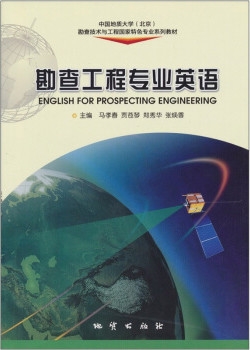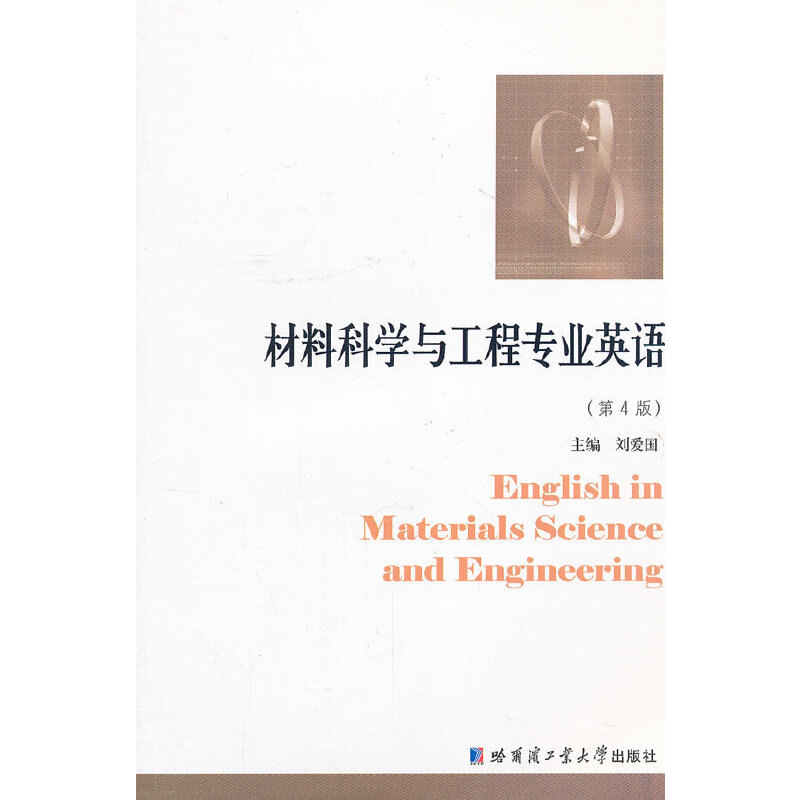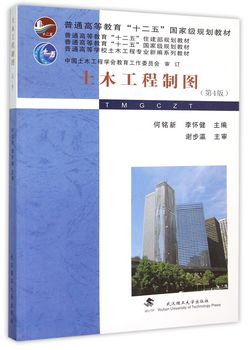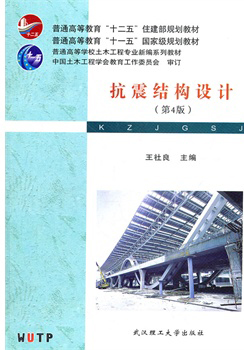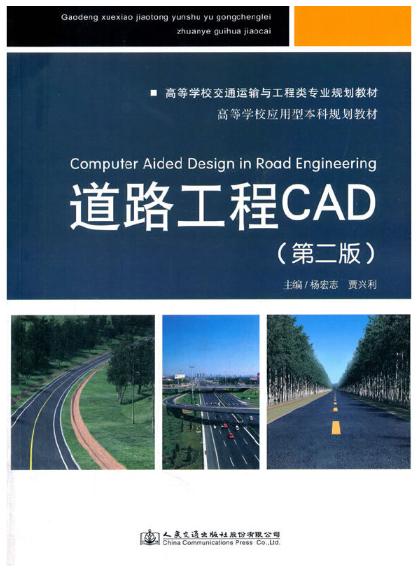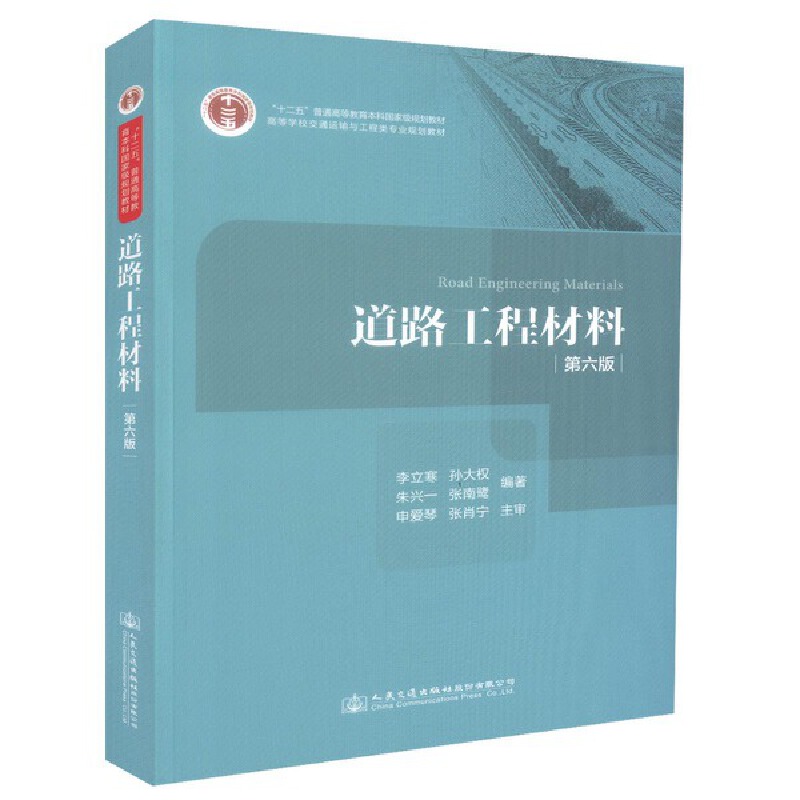勘查工程专业英语 / 中国地质大学(北京)勘查技术与工程国家特色专业系列教材
定价:¥21.50
作者: 马孝春
出版时间:2014-06
出版社:地质出版社
- 地质出版社
- 9787116068513
- 1版
- 26529
- 49258908-0
- 平装
- 正16开
- 2014-06
- 350
- 228
- 工学
- 地质类
- H31
- 勘查技术与工程
- 本科
内容简介
马孝春、贾苍琴、郑秀华、张焕香编著的《勘查工程专业英语》共有15个单元,内容涉及地质、现场勘察、土工测试、钻探工程、基础工程、注浆工程、边坡治理工程、石油钻井、非开挖工程等方面的英语阅读材料。文后附有详细的同类扩展词汇,语言规范、信息量大。
本书可作为勘查工程、土木工程、岩土工程、地质工程等专业的本专科生、研究生的专业配套教材,以及上述专业领域学生出国深造前应知必会的学习材料,也是从事涉外工程翻译人员的重要参考资料。
本书可作为勘查工程、土木工程、岩土工程、地质工程等专业的本专科生、研究生的专业配套教材,以及上述专业领域学生出国深造前应知必会的学习材料,也是从事涉外工程翻译人员的重要参考资料。
目录
Unit 1 Chemical and Physical Properties of Rocks
1.1 Composition of Rocks
1.2 Geological Classification of Rocks
Unit 2 Soll Composition and Classification
2.1 Soil Composition
2.1.1 Weight-volume Relationships
2.1.2 Relative Density
2.1.3 Particle Size
2.1.4 Clays
2.1.5 Plasticity and the Atterberg Limits
2.2 Soil Classification
Unit 3 Influence of Groundwater to Engineering
3.1 Pavements
3.2 Slopes
Unit 4 Site Investigation
4.1 Background Literature Search
4.2 Field Reconnaissance
4.3 Subsurface Exploration and Sampling
4.4 Exploratory Borings
4.5 Soil Sampling
4.6 Groundwater Monitoring
4.7 Exploratory Trenches
Unit 5 Laboratory Testing of Soils
5.1 Introduction
5.2 Common Laboratory Tests
5.2.1 Index Tests
5.2.2 Oedometer
5.2.3 Shear Strength Tests
5.2.4 Permeability
Unit 6 In-situ Testing
6.1 Standard Penetration Test (SFI')
6.2 Cone Penetration Test (CPT)
6.3 Vane Shear Test (VST)
6.4 Pressuremeter Test (PMT)
6.5 Diiatometer Test (DMT)
6.6 Becker Penetration Test
6.7 Comparison of In-situ Test Methods
Unit 7 Drilling Technology
7.1 Classification of Types of Drilling
7.2 The Connection to the Bit
7.2.1 Transmission of Power
7.2.2 Control of the Bit
7.2.3 Conduct of Fluid
7.2.4 Conduct of Cuttings
7.2.5 Drill String Flexibility
7.2.6 Tasks Performed Down the Hole
7.2.7 The Drill String Gives the Clues
7.3 Pipes and Pipe Threads
7.3.1 Tubing for Drill Pipe
7.3.2 Tubing for Casing
7.3.3 Threads
7.3.4 Rotary Tool Joints
7.3.5 Drill Pipe Failure
7.3.6 Correct Make-up Torque
7.3.7 Caring for Pipes and Threads
7.4 Cable Tool and Hydraulic Drilling
7.4.1 Features of Cable Tool Percussion
7.4.2 Cable Tool Techniques
7.4.3 Other Cable Types
7.4.4 Hydraulic Types of Drilling
7.4.5 Suitability of Hydraulic Drilling
7.4.6 Essential Cable Tool Drill String Components
7.5 Auger Drilling
7.5.1 Types of Auger Drilling
7.5.2 Applications of Auger Drills
7.6 Rotary and Down-hole Hammer Drilling
7.6.1 What is Rotary Drilling?
7.6.2 Forms of Rotary Drive
7.6.3 Methods of Feeding the Bit
7.6.4 Rotary Down-hole Hammer Drilling
7.6.5 Rotary Fluid Circulation
7.6.6 Reverse Circulation
7.6.7 Types and Features of Rotary Rigs
7.7 Slim-hole Rotary and Diamond Drilling
7.7.1 What is Meant by Slim-hole Rotary Drilling?
7.7.2 Varieties of Slim-hole Core Drilling
7.7.3 Diamond Drill Rigs
7.7.4 Other Slim-hole Types of Drilling
7.8 Drill Rig Parameters
Unit 8 Shallow Foundations
8.1 Function of Foundations
8.1.1 Foundation Engineering
8.1.2 Foundation Classification and Selection
8.1.3 General Requirements
8.1.4 Additional Considerations
8.2 Types of Shallow Foundations
8.2.1 Introduction
8.2.2 Strip Foundations
8.2.3 Rafts
Unit 9 Deep Foundations
9.1 Pile Foundations
9.1.1 Steel Piles
9.1.2 Concrete Piles
9.1.3 Negative Skin Friction
9.1.4 Determination of Negative Skin Friction
9.1.5 Pile Groups
9.1.6 Pile Spacing
9.1.7 Efficiency
9.2 Drilled Shaft and Caisson Foundations
9.2.1 Types of Drilled Shafts
9.2.2 Construction Procedures
9.2.3 Types of Caissons
Unit 10 Soil Improvements
10.1 Methods of Soil Improvements
10.1.1 General Principles of Compaction
10.1.2 Vibroflotation
10.1.3 Sand Drains
10.1.4 Lime Stabilization
10.1.5 Cement Stabilization
10.1.6 Fly Ash Stabilization
10.1.7 Stone Columns
10.1.8 Sand Compaction Piles
10.1.9 Dynamic Compaction
10.2 Soil Stabilization
Unit 11 Grouting Engineering
11.1 Definition
11.2 Conceptual Design
11.3 Uses of Grouting
ll.4 Types of Grouting
1.1 Composition of Rocks
1.2 Geological Classification of Rocks
Unit 2 Soll Composition and Classification
2.1 Soil Composition
2.1.1 Weight-volume Relationships
2.1.2 Relative Density
2.1.3 Particle Size
2.1.4 Clays
2.1.5 Plasticity and the Atterberg Limits
2.2 Soil Classification
Unit 3 Influence of Groundwater to Engineering
3.1 Pavements
3.2 Slopes
Unit 4 Site Investigation
4.1 Background Literature Search
4.2 Field Reconnaissance
4.3 Subsurface Exploration and Sampling
4.4 Exploratory Borings
4.5 Soil Sampling
4.6 Groundwater Monitoring
4.7 Exploratory Trenches
Unit 5 Laboratory Testing of Soils
5.1 Introduction
5.2 Common Laboratory Tests
5.2.1 Index Tests
5.2.2 Oedometer
5.2.3 Shear Strength Tests
5.2.4 Permeability
Unit 6 In-situ Testing
6.1 Standard Penetration Test (SFI')
6.2 Cone Penetration Test (CPT)
6.3 Vane Shear Test (VST)
6.4 Pressuremeter Test (PMT)
6.5 Diiatometer Test (DMT)
6.6 Becker Penetration Test
6.7 Comparison of In-situ Test Methods
Unit 7 Drilling Technology
7.1 Classification of Types of Drilling
7.2 The Connection to the Bit
7.2.1 Transmission of Power
7.2.2 Control of the Bit
7.2.3 Conduct of Fluid
7.2.4 Conduct of Cuttings
7.2.5 Drill String Flexibility
7.2.6 Tasks Performed Down the Hole
7.2.7 The Drill String Gives the Clues
7.3 Pipes and Pipe Threads
7.3.1 Tubing for Drill Pipe
7.3.2 Tubing for Casing
7.3.3 Threads
7.3.4 Rotary Tool Joints
7.3.5 Drill Pipe Failure
7.3.6 Correct Make-up Torque
7.3.7 Caring for Pipes and Threads
7.4 Cable Tool and Hydraulic Drilling
7.4.1 Features of Cable Tool Percussion
7.4.2 Cable Tool Techniques
7.4.3 Other Cable Types
7.4.4 Hydraulic Types of Drilling
7.4.5 Suitability of Hydraulic Drilling
7.4.6 Essential Cable Tool Drill String Components
7.5 Auger Drilling
7.5.1 Types of Auger Drilling
7.5.2 Applications of Auger Drills
7.6 Rotary and Down-hole Hammer Drilling
7.6.1 What is Rotary Drilling?
7.6.2 Forms of Rotary Drive
7.6.3 Methods of Feeding the Bit
7.6.4 Rotary Down-hole Hammer Drilling
7.6.5 Rotary Fluid Circulation
7.6.6 Reverse Circulation
7.6.7 Types and Features of Rotary Rigs
7.7 Slim-hole Rotary and Diamond Drilling
7.7.1 What is Meant by Slim-hole Rotary Drilling?
7.7.2 Varieties of Slim-hole Core Drilling
7.7.3 Diamond Drill Rigs
7.7.4 Other Slim-hole Types of Drilling
7.8 Drill Rig Parameters
Unit 8 Shallow Foundations
8.1 Function of Foundations
8.1.1 Foundation Engineering
8.1.2 Foundation Classification and Selection
8.1.3 General Requirements
8.1.4 Additional Considerations
8.2 Types of Shallow Foundations
8.2.1 Introduction
8.2.2 Strip Foundations
8.2.3 Rafts
Unit 9 Deep Foundations
9.1 Pile Foundations
9.1.1 Steel Piles
9.1.2 Concrete Piles
9.1.3 Negative Skin Friction
9.1.4 Determination of Negative Skin Friction
9.1.5 Pile Groups
9.1.6 Pile Spacing
9.1.7 Efficiency
9.2 Drilled Shaft and Caisson Foundations
9.2.1 Types of Drilled Shafts
9.2.2 Construction Procedures
9.2.3 Types of Caissons
Unit 10 Soil Improvements
10.1 Methods of Soil Improvements
10.1.1 General Principles of Compaction
10.1.2 Vibroflotation
10.1.3 Sand Drains
10.1.4 Lime Stabilization
10.1.5 Cement Stabilization
10.1.6 Fly Ash Stabilization
10.1.7 Stone Columns
10.1.8 Sand Compaction Piles
10.1.9 Dynamic Compaction
10.2 Soil Stabilization
Unit 11 Grouting Engineering
11.1 Definition
11.2 Conceptual Design
11.3 Uses of Grouting
ll.4 Types of Grouting

